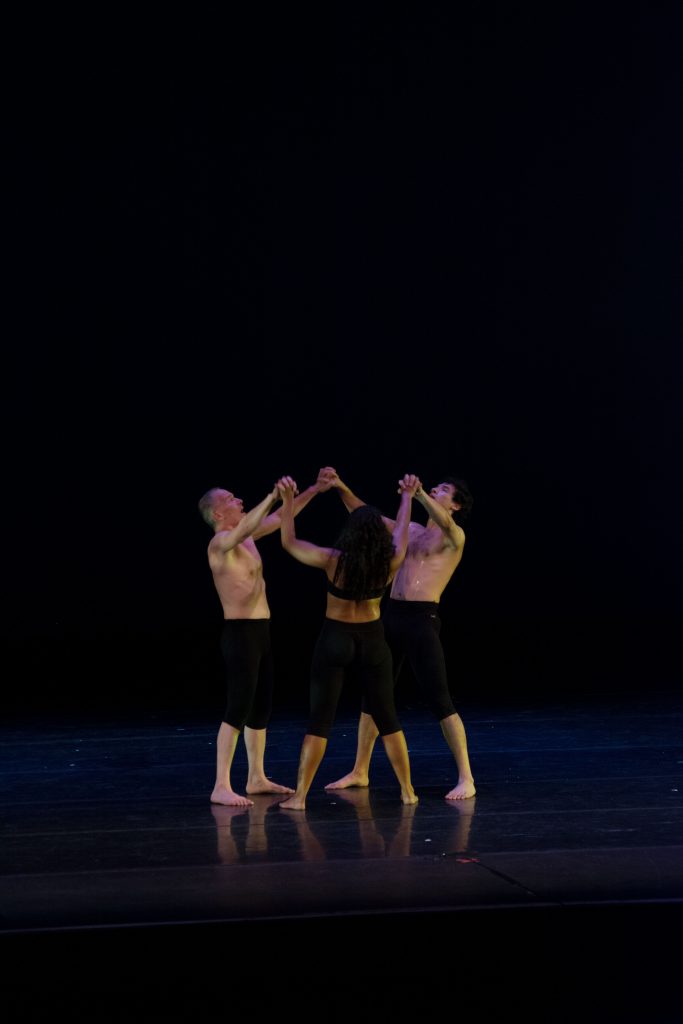
An afternoon of music, humor, dance — and Velcro. Welcome to Galumpha.
The 16 routines performed during Galumpha’s Saturday afternoon show in the Osterhout Concert Theater of the Anderson Center contained all these things and more. The unique performance featured a combination of dance, gymnastics and comedy.
“We come from dance and we speak the language of dance,” said Andy Horowitz, ‘89, creator, president and director of Galumpha. He also serves as the artist-in-residence for BU’s theatre department.
Horowitz is one part of the Galumpha trio, which also includes Binghamton alumnus Gil Young Choi and local dance teacher BriAnna Barnett. The three performers consistently demonstrated their flexibility, balance and body strength as they climbed on top of each other to create a variety of collaborative structures. In one routine, they formed a human pendulum and in another, they stacked on top of each other in a triple piggyback.
“We trust each other,” Barnett said. “We have to have a close connection because what we do is very intimate.”
The audience was filled with both BU students and community members of all ages. In addition to the clapping, the sounds of children laughing could be heard often throughout the show. Young Choi, in particular, offered a comedic touch with his exaggerated movements and animated personality.
“Gil [Young Choi] is hilarious in real life,” Barnett said. “It’s just our actual personalities on stage.”
Although Young Choi stands out in comedic terms, all three performers are essential to Galumpha. In fact, the choice to have three people on stage is a deliberate and important part of the show.
”Whenever you have four people, you can split them down the middle and make couples, and couples dancing is obvious,” Horowitz said. “But, when you have three people, you create a choreographic stumbling block. I’ve loved that puzzle and I’ve been working on that puzzle all my professional career.”
In each Galumpha routine, the human body is the central prop. The way that the three performers synchronize, fit together and move with ease was highlighted by the starkness of the stage. Blue, orange and pink spotlights bathed the performers’ bodies in a rainbow of light as they moved in unison to instrumental music. The music in the background ranged from simple xylophone dings to electric guitar riffs.
In one routine, the sound escalated beyond simple music. The performers wore metal pans around their waist and metal shoes that made a clanging noise whenever they kicked their feet back. They stomped their feet and kicked to clang, creating a rhythm while they danced around on stage. In another routine, they wore Velcro hats with Velcro balls that could be detached and reattached from each other. They played with this costume in a multitude of ways, including climbing on top of each other and dropping the balls from one person’s mouth to the hat of the person below them.
The audience’s reaction, Horowitz said, is what he values most in performing.
“The meaning of Galumpha, it might not be what I get out of it, but what the audience gets out of it,” Horowitz said. “The reason we keep doing it is because people keep offering us work, and the reason people keep offering us work is because the audiences keep having an experience that they care to repeat.”


